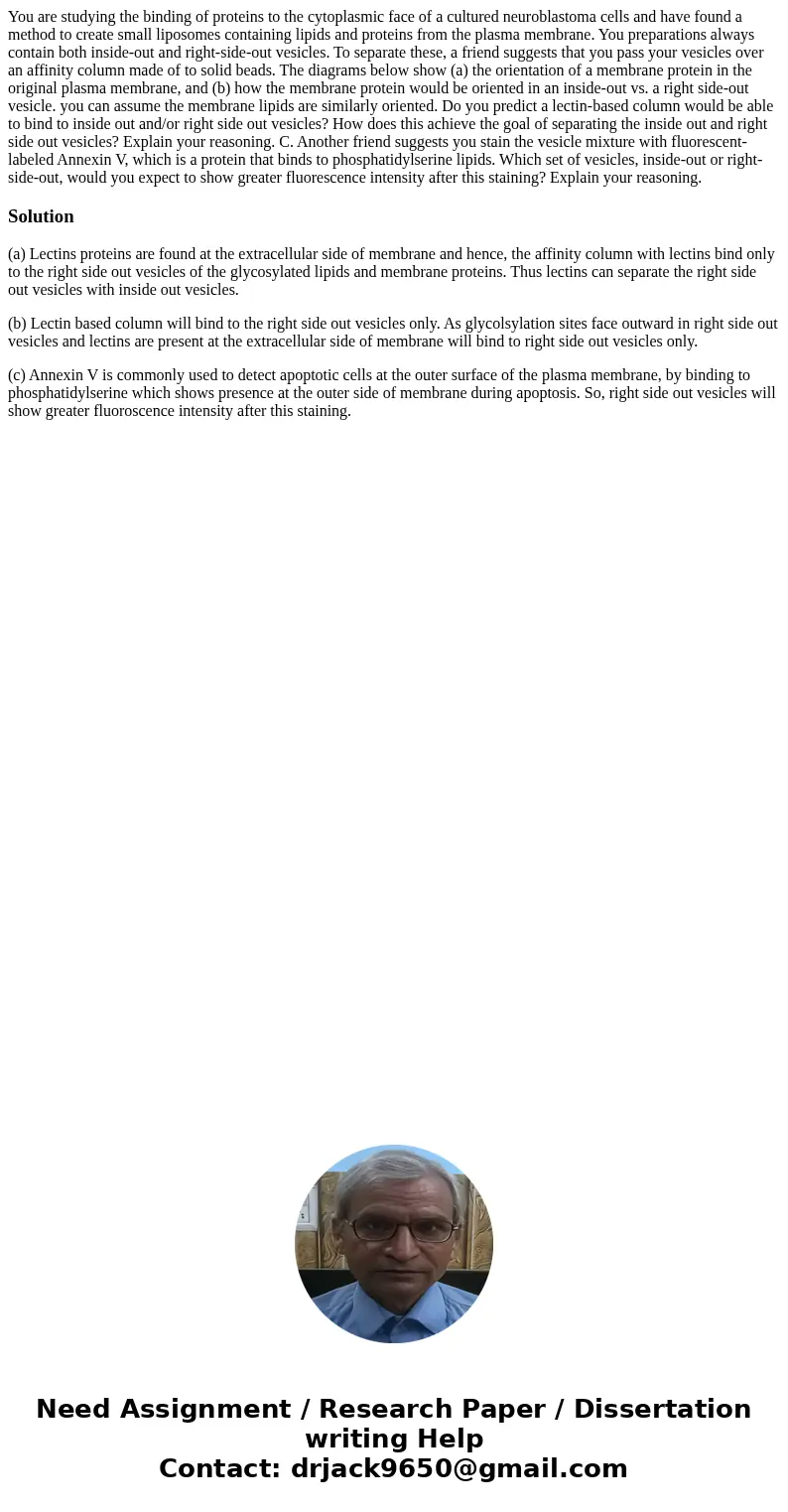You are studying the binding of proteins to the cytoplasmic face of a cultured neuroblastoma cells and have found a method to create small liposomes containing lipids and proteins from the plasma membrane. You preparations always contain both inside-out and right-side-out vesicles. To separate these, a friend suggests that you pass your vesicles over an affinity column made of to solid beads. The diagrams below show (a) the orientation of a membrane protein in the original plasma membrane, and (b) how the membrane protein would be oriented in an inside-out vs. a right side-out vesicle. you can assume the membrane lipids are similarly oriented. Do you predict a lectin-based column would be able to bind to inside out and/or right side out vesicles? How does this achieve the goal of separating the inside out and right side out vesicles? Explain your reasoning. C. Another friend suggests you stain the vesicle mixture with fluorescent-labeled Annexin V, which is a protein that binds to phosphatidylserine lipids. Which set of vesicles, inside-out or right-side-out, would you expect to show greater fluorescence intensity after this staining? Explain your reasoning.
(a) Lectins proteins are found at the extracellular side of membrane and hence, the affinity column with lectins bind only to the right side out vesicles of the glycosylated lipids and membrane proteins. Thus lectins can separate the right side out vesicles with inside out vesicles.
(b) Lectin based column will bind to the right side out vesicles only. As glycolsylation sites face outward in right side out vesicles and lectins are present at the extracellular side of membrane will bind to right side out vesicles only.
(c) Annexin V is commonly used to detect apoptotic cells at the outer surface of the plasma membrane, by binding to phosphatidylserine which shows presence at the outer side of membrane during apoptosis. So, right side out vesicles will show greater fluoroscence intensity after this staining.

 Homework Sourse
Homework Sourse